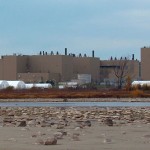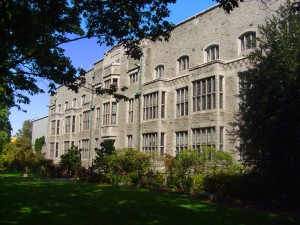Posted at 04 Jul 2014 09:27h
in
Client showcase
by Deb

It seems like only last year that a small core of associates at Talk Science to Me experienced our
Adventures in Ottawa (see entertaining blog by Talk Science mastermind, Eve Rickert). Oh, wait. It
was only a year ago. Having edited literally thousands of their pages since our seminal meeting with the
Canadian Nuclear Safety Commission, my (our) relationship with the CNSC seems like it’s lasted a lifetime. I mean that in a good way.
In case you’re wondering, the CNSC is the federal governmental body that “regulates the use of [Canadian] nuclear energy and materials to protect health, safety, security and the environment, and to implement Canada’s international commitments on the peaceful use of nuclear energy; and to disseminate objective scientific, technical and regulatory information to the public.” And I am the senior editor for Talk Science since its founding three years ago—and the Minnesotan mentioned in Eve’s Ottawa article.
But enough about me. Recently, several CNSC reports reached an editorial juncture regarding their eventual disclosure of information to the Canadian public. Before these highly visible, essential documents connect with the general population, they must go under the scrutinizing lens of Talk Science to Me eyeballs—and this season, the eyeballs once again belong to me. Claire Eamer, project lead this past year and who is also featured in the Ottawa blog, has been the other major set of eyeballs. And a huge round of applause goes to Roma Ilnyckyj, who lent Eyeballs #5 and 6 to the latest report, the annual CNSC Staff Integrated Safety Assessment of Canadian Nuclear Power Plants for 2013.



 This attitude becomes harder to justify when the world of the narrative bears less resemblance to our own. How pedantic can you really be about the invented science of Star Trek? Very pedantic, it turns out. It turns out things like space combat aren’t pure speculation at this stage; there are some basic physical constraints that will probably apply no matter how technologically advanced we get. But really, there’s no limit. (Even Harry Potter got (dreadfully) re-written by someone who thought the system of magic in the stories wasn’t logical enough.)
This attitude becomes harder to justify when the world of the narrative bears less resemblance to our own. How pedantic can you really be about the invented science of Star Trek? Very pedantic, it turns out. It turns out things like space combat aren’t pure speculation at this stage; there are some basic physical constraints that will probably apply no matter how technologically advanced we get. But really, there’s no limit. (Even Harry Potter got (dreadfully) re-written by someone who thought the system of magic in the stories wasn’t logical enough.) 
 The University of British Columbia (UBC)’s Department of Chemistry is housed in one of the most beautiful buildings on campus (which you may have seen in one or two X-Files episodes). But even more beautiful is what goes on inside the building: it's home to world-class researchers whose work has contributed to groundbreaking discoveries and scientific developments.
The University of British Columbia (UBC)’s Department of Chemistry is housed in one of the most beautiful buildings on campus (which you may have seen in one or two X-Files episodes). But even more beautiful is what goes on inside the building: it's home to world-class researchers whose work has contributed to groundbreaking discoveries and scientific developments.
 It seems like only last year that a small core of associates at Talk Science to Me experienced our
It seems like only last year that a small core of associates at Talk Science to Me experienced our